The very first thing that your home needs and that you should have is perfect air quality and moisture control. It is around these three factors that the comfort, health, and durability of your property revolve. A whole house dehumidifier is a mighty tool to have at your disposal but, in order to really make the most of it, proper installation and ducting are the things to focus on.
This guide is about the installation practices for dehumidifier duct systems that not just work but also blend in with the HVAC setup of your home. If mold prevention, allergen reduction, or simply a comfortable indoor environment are your aims, then this article is for you as it will give you the necessary insights and strategies to get it right in the first attempt.
Understanding Dehumidifiers
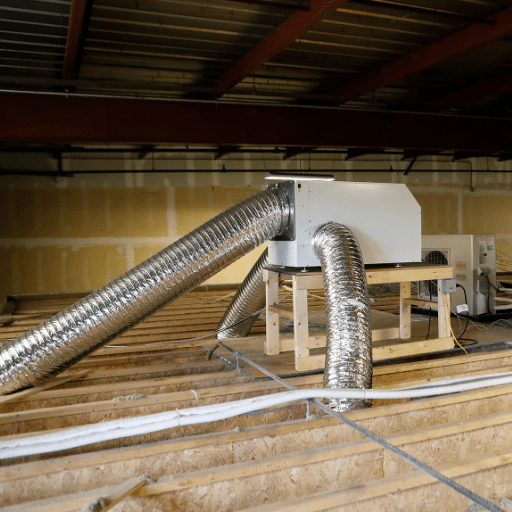
Dehumidifiers are appliances that are utilized to remove water vapor from the air, and therefore make the humidity level in an indoor area more comfortable. The process involves sucking the humidity-laden air, making it colder so that the vapor gets liquefied, and then blowing the less humid air back into the room.
Key Benefits:
- Combats mold growth and prevents structural damage
- Reduces dust mites and allergens
- Eliminates musty odors and bad smells
- Creates a healthier and more pleasant indoor environment
What is a Dehumidifier?
A dehumidifier is a domestic device whose main function is to eliminate the air’s moisture thus creating a more comfortable and healthier indoor atmosphere. Dehumidifiers operate through the mechanism of sucking the moist air with a fan into the unit, where the air then flows over the cooled coils. This action captures the moisture content of the air and converts it into a liquid that either goes into a container or moves out through a drain. The room then has the air that is less humid being returned to it.
Dehumidifiers are especially advantageous in places with a lot of moisture in the air or in rooms with limited ventilation since they are effective in combating mold development, decreasing the number of allergens like dust mites and also getting rid of the musty smells. State-of-the-art dehumidifiers also have user-friendly features such as humidity levels that can be adjusted, energy-saving options, and digital screens but they are still considered the main tool for keeping indoor air quality in good condition.
Benefits of Using a Dehumidifier
The use of dehumidifiers yields numerous advantages to be exact, for the indoor living conditions enhancement. The first and foremost advantage is that it helps keep the humidity level right, usually between 30% and 50%, thus stopping the development of nuisance mold and mildew, which can sometimes cause health issues as well as ruin property.
- Mold and Mildew Prevention: Maintains optimal humidity levels (30-50%) to prevent growth
- Allergen Reduction: Greatly reduces dust mites and other allergens
- Respiratory Health: Improves air quality and breathing conditions
- Energy Efficiency: Modern units feature programmable settings for cost-effectiveness
- Property Protection: Prevents moisture damage to furniture and structures
Types of Dehumidifiers
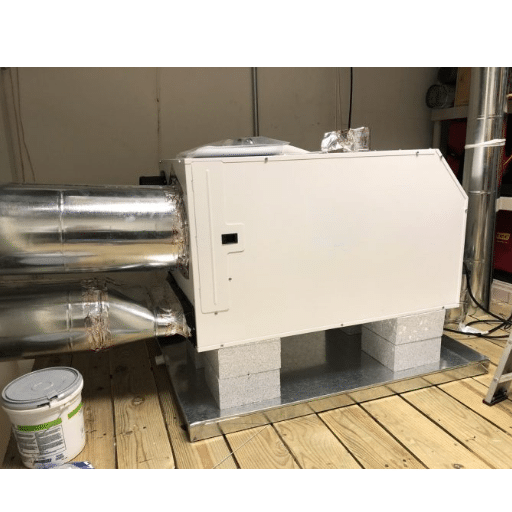
| Type | How It Works | Best For | Key Features |
|---|---|---|---|
| Refrigerant Dehumidifiers | Uses refrigeration cycle to cool air and condense water vapor | High humidity and warm climates | Most popular, ideal for seasonal humidity peaks |
| Desiccant Dehumidifiers | Uses moisture-absorbing material (desiccant) | Colder regions and low temperatures | Energy-efficient, works at low temperatures |
| Whole-House Dehumidifiers | Integrated with HVAC systems | Large homes in humid areas | Comprehensive solution, manages entire indoor air quality |
| Portable/Compact Dehumidifiers | Standalone units for specific areas | Small apartments, targeted spaces | Versatile, affordable, quick solutions |
Ductwork and Ducted Dehumidifiers
Ducted dehumidifiers have gained a lot of popularity these days since they can be installed as part of the HVAC system of a house and hence, offer whole-house dehumidification. Homeowners are looking for one single units that will be able to handle the issues of humidity everywhere, thus saving the cost of multiple separate appliances.
Importance of Proper Ductwork
The proper ductwork system is indispensable in maintaining the efficiency of HVAC systems, including ducted dehumidifiers, to mention one of its applications. If the ductwork is not well designed and properly installed, the airflow may be uneven, leading to different humidity levels in different rooms.
Common Ductwork Issues:
- Uneven cooling or moisture distribution
- Leaks and air loss
- Blockages restricting airflow
- Insufficient insulation
Solution: Regular duct sealing and maintenance reduces energy consumption, operating costs, and improves overall system efficiency.
How Ducted Dehumidifiers Work
Ducted dehumidifiers are devices that do integrate with home HVACs and directly work to control and thus reduce the humidity levels indoor. They take the air through the intake vents where the moist air passes over the cooling coils, and the excess moisture along with the cooling is done thereby, and thus the moisture is removed.
- Air Intake: Moist air is drawn through intake vents
- Cooling Process: Air passes over cooling coils, removing excess moisture
- Condensation Collection: Moisture is collected in a drain pan
- Drainage: Moisture is directed out through a drainage line
- Air Return: Dehumidified air is reheated and distributed through ductwork
Modern Features:
- Energy-efficient performance
- Smart home system compatibility
- Remote monitoring and humidity adjustment
- Quiet operation
- Large area handling capability
Choosing the Right Duct Kit
Choosing the correct duct kit for your ducted dehumidifier is very important to get the most out of its performance and efficiency. A good duct kit must be made in such a way that it matches your dehumidifier model’s specifications, thus ensuring that it works flawlessly.
Key Considerations:
- Compatibility: Must match your dehumidifier model specifications
- Durability: High-quality materials for long-term performance
- Insulation: Insulated ducting reduces heat transfer and prevents condensation
- Maintenance: Easy-to-maintain components
- Area Size: Consider the space requiring dehumidification
- Ventilation Layout: Must align with your existing system
Ways to Duct a Dehumidifier
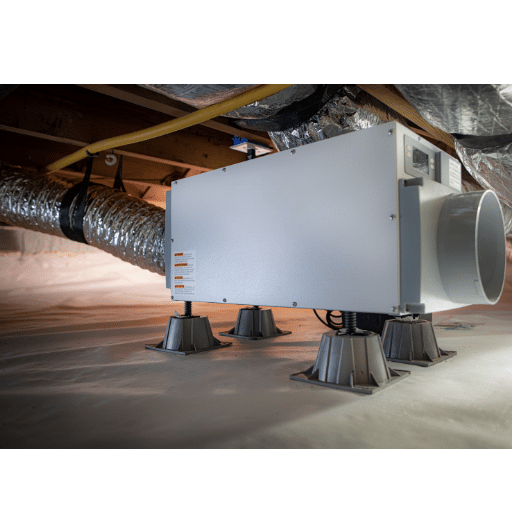
Flexible Ducting
Utilizing flexible ducting is one of the prevalent ways of ducting dehumidifiers. The general preference for this option comes from its easy installation, adjustability, and the ability to operate in besides feeding the supply airflow through the outlet of the machine.
Best Practices:
- Ensure proper insulation to prevent heat loss
- Seal all connections to prevent air leakage
- Maintain smooth curves to optimize airflow
- Regular inspection for wear and tear
Hard Ducting for Permanent Solutions
An effective choice for the hard ducting method speaks of the permanent setup that is made in this way. It is metal or rigid plastic ducts that are dimensioned to the specifics of the existing ventilation system and the connecting point of the room.
- Ideal For: Large rooms or HVAC system integration
- Advantages: Superior airflow and durability
- Requirements: Professional installation and accurate measurements
Split Space Ducting
If servicing multiple rooms with one dehumidifier is your need, split space ducting might be just what you are looking for. The channeling of air into different zones takes place through ducting branched out form the main ducting.
Perfect For:
- Basements with multiple rooms
- Crawl spaces requiring even moisture control
- Multi-room arrangements
Tip: Use dampers in the ductwork to control air flow to specific areas.
Considerations for Custom Ducting
When the ductwork for your dehumidifier is being designed, keep in mind factors like the space size, airflow, and noise levels.
- Install soundproof and energy-efficient insulated ductwork
- Have ducts sealed professionally to prevent moisture ingress
- Schedule frequent maintenance to extend dehumidifier life
- Consider accessibility for future repairs and adjustments
Installation Options for Ducted Systems
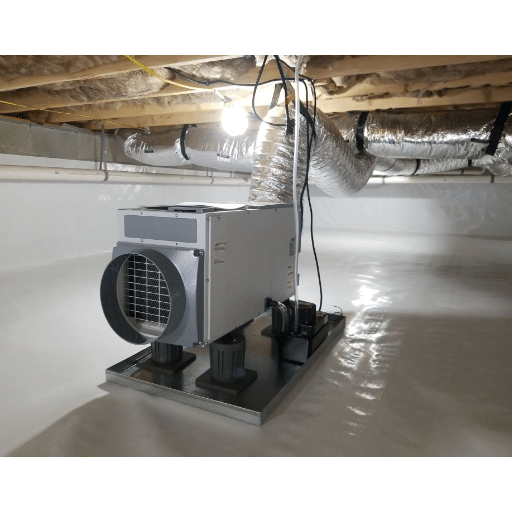
Homeowners have multiple installation options to consider for ducted dehumidifier systems that generally suit their specific requirements. Ducted units can either be integrated with an existing HVAC system or installed as a separate unit with its own ductwork.
| Installation Type | Description | Advantages | Best For |
|---|---|---|---|
| HVAC Integration | Dehumidifier operates alongside heating and cooling functions | Better overall climate control, unified system operation | Homes with existing central HVAC |
| Standalone System | Custom ductwork for specific trouble areas | Targets localized moisture issues, doesn’t impact main HVAC | Finished basements, crawl spaces |
| Smart System | Fitted with sensors and Wi-Fi connectivity | Remote monitoring and adjustment, maximized efficiency | Tech-savvy homeowners, remote properties |
Important: It is very important to consult professional technicians during the design and installation phase in order to guarantee good airflow, reduce pressure drops and improve the performance of the whole system.
Best Practices for Ducting a Dehumidifier
Practices for ducting a dehumidifier involve several key aspects that are favorable for the performance and efficiency.
1. Correct Duct Sizing
Make sure to install correctly sized ducts that correspond to the specifications of your dehumidifier in order to eliminate the problem of airflow restrictions. Poorly sized ducts lead to inefficiencies and increased energy consumption.
2. Proper Insulation
Proper insulation of the ducts is also an essential obligation as it keeps heat transfer low and prevents condensation from forming on the outside of the ducts, especially in humid environments.
3. Strategic Positioning
Make sure that the layout of the ducting promotes even distribution of dehumidified air to the whole area that is being serviced, therefore, avoiding dead zones where moisture could gather.
4. Return Duct Installation
The installation of the return duct which provides for an air recirculation can be the major contributing factor to the dehumidification system being very much effective.
5. Inline Boosters or Fans
For large or complex areas, it may be a good idea to pool inline boosters or fans to help in the maintenance of steady air circulation for the whole area serviced.
6. Regular Maintenance
Regular maintenance is necessary in order for ducts and the dehumidifier system to function efficiently. Ducts need to be cleaned from dust periodically so as to prevent dust buildup and also inspect for the presence of leaks or obstructions that could possibly hinder performance.
Common Mistakes to Avoid
Top Mistakes:
- Neglecting Regular Maintenance: Leads to poor airflow and reduced performance. Check air ducts and filters regularly for dirt, dust, or obstructions.
- Poor Positioning: Placing the dehumidifier near walls or furniture obstructs airflow. Position in an open space for optimal results.
- Ignoring Duct Sealing: Unsealed connections cause air leakage and reduced efficiency.
- Inadequate Drainage: Improper drainage setup can lead to water backup and system failure.
- Skipping Professional Installation: Complex systems benefit greatly from professional expertise.
Specific Models and Brands
Selecting a dehumidifier does not have to be challenging since there are many consistent models and brands that are highlighted for their performance, reliability, and consumer feedback.
Popular Dehumidifier Models
| Model | Key Features | Best For |
|---|---|---|
| Frigidaire FGAC5044W1 | Smart features, energy-efficient | Medium to large areas |
| hOmeLabs Energy Star | Economical price, great moisture removal | Budget-conscious buyers |
| Vremi 22 Pint | Portable, user-friendly operation | Small to medium rooms |
| Tosot 50 Pint | Silent operation, energy-efficient | Eco-conscious customers |
Aprilaire Dehumidifiers
Aprilaire dehumidifiers are widely praised for their reliability as well as the best indoor humidity maintenance performance. They are made to fit whole-home dehumidification specifically which is something that makes them different from most portable dehumidifiers.
Key Features:
- Durability: Built to last with high-quality components
- Low Maintenance: Minimal upkeep requirements
- Energy Efficient: Reduces operating costs
- Automatic Control: Self-adjusting humidity levels
- Washable Filters: Easy cleaning and maintenance
Verdict: Worth the investment for those wanting an efficient and long-lasting whole-home solution.
Santa Fe Dehumidifiers
Santa Fe dehumidifiers are another option that the majority of customers go for as they are considering the best solution for indoor humidity control. These dehumidifiers are characterized by their great capacity and low energy consumption which makes them perfect for large rooms and hard conditions.
Key Features:
- High Capacity: Excellent moisture removal rates
- Energy Efficient: Low operating costs
- Quiet Operation: Minimal noise disturbance
- Solid Construction: Durable and long-lasting
- Advanced Controls: Cutting-edge humidity management
- Extended Warranty: Long-term manufacturer support
Verdict: Excellent investment for those prioritizing comfort and air quality in their home or office.
Comparing Ductable Options
Santa Fe has some of the most adaptable and efficient ductable dehumidifiers available. These units are going to work perfectly with your current HVAC system and will provide consistent humidity control over the entire area.
Santa Fe Ultra Series Highlights:
- Advanced fan technology for uniform air distribution
- Large capacity for moisture removal
- Nearly silent operation
- Flexible ducting options
- Suitable for extensive areas
- Balance of luxury features and hassle-free installation
Dehumidification in Different Spaces
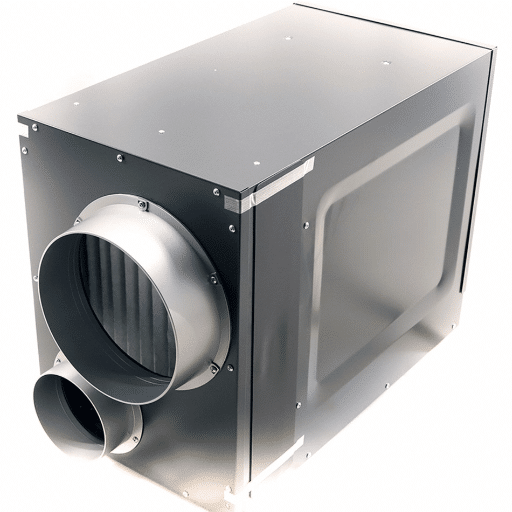
Dehumidification demands can fluctuate dramatically according to the nature of the area involved.
| Space Type | Humidity Challenges | Recommended Solution | Key Features Needed |
|---|---|---|---|
| Basements & Crawl Spaces | High moisture concentration, limited ventilation | Santa Fe or similar heavy-duty units | 24/7 operation capability, 30-50% humidity control |
| Living Quarters | Need for comfort and quiet operation | Santa Fe ducted units | Silent operation, energy-efficient, HVAC integration |
| Commercial Buildings | Large areas, changing moisture levels | High-capacity dehumidifiers | Energy-efficient, eco-friendly, durable design |
Crawl Space Dehumidification
Dehumidifying the crawl space has become a primal solution for the houses which are often exposed to moisture. A lot of people want solutions that are both energy efficient and durable, which means that the consumers want the products that are going to be cheaper in the long run and will also function to their expectations.
Benefits of Crawl Space Dehumidification:
- Prevents mold growth
- Eliminates structural damage
- Improves indoor air quality
- Reduces musty odors
- Creates healthier home environment
Whole House Dehumidification Solutions
Whole house dehumidification systems are created to handle excess moisture-related problems across an entire house very well, thus making the indoor air much healthier and more pleasant.
- Comprehensive Coverage: Manages humidity throughout entire home
- Energy Efficiency: Reduces power consumption
- Mold Prevention: Protects against moisture damage
- Smart Technology: Automatic humidity control
- Health Benefits: Improved air quality and comfort
Monitoring Humidity Levels
Keeping an eye on the humidity in your house is one of the most important things to do for a good and healthy living environment.
Optimal Indoor Humidity: 30% to 50%
- Below 30%: May cause dry skin and lung irritation
- Above 50%: Risk of mold and allergen multiplication
- Monitoring Tool: Use a hygrometer to measure humidity accurately
Recommendation: When combined with a whole house dehumidification system, regular monitoring can guarantee that your house always has optimal humidity, which is good for both health and energy saving.
References
-
“Investigation of Energy Impacts of Ducted Dehumidifier Duct” – Discusses the design and energy impacts of ducted dehumidifiers, including their use in whole-house systems.
-
“Energy and Latent Performance Impacts from Four Different Dehumidifiers” – Examines the energy consumption and performance of ducted dehumidifiers in residential settings.
-
“Case Study of an Innovative HVAC System with Integrated Dehumidification” – Explores the integration of dehumidifiers into HVAC systems and their impact on indoor humidity control.
Frequently Asked Questions (FAQ)
What is the best method for a dehumidifier ducting?
The combining of a dehumidifier with the current air system is the best method for ducting. This may be accomplished by connecting the system to the return plenum so that the unit can effectively get rid of the moisture from the air that’s being cycled around in your home. Inlet and outlet sizes must be well thought out to keep air flow and static pressure at optimal levels.
What operating principle does a ducted dehumidifier work on?
A ducted dehumidifier brings in the moist air through an inlet, and then the air is passed over the evaporator coil. The evaporator coil cools down the air and at the same time, moisture condenses and drains out through the drain hose. The humidified air is then sent back through the supplying duct to the area, hence lessening the humidity of the whole location.
Is it beneficial to use a dehumidifier in crawlspaces?
Definitely, a dehumidifier will be very beneficial in crawl spaces since it will get rid of the extra moisture which could support mold and decay in the structure. Installing a specialized dehumidifier for crawl spaces will help create an environment that is healthier, with good air quality, and no mold spores to contend with.
What is a Santa Fe dehumidifier and what are the advantages of its use?
Santa Fe is a brand that manufactures high-quality dehumidifiers that can serve well in both residential and commercial environments. Such dehumidifiers are aimed at giving out drier air from large spaces while at the same time saving on energy, hence people considering humidity issues and mold infesting more and more.
How do you go about dehumidifier duct system installation?
When installing a dehumidifier duct system, first pick the right spot for the machine then set up proper drainage through a drain hose and link it to the current air handler. Moreover, you will need to lay out ductwork that connects the dehumidifier to both the supply side and the return air ducts for this method to be effective in air movement and moisture extraction throughout the area.
What is the importance of air flow in dehumidification?
Air flow is one of the main factors that influence the efficiency of the dehumidifier to remove moisture from the air. A duct system that is designed properly and facilitates good air movement will guarantee that the dehumidifier receives a constant supply of moist air, while dry air is continuously circulated back into the room, thus maintaining comfortable humidity levels.
What is the impact of a dehumidifier on a home’s energy savings?
A dehumidifier has the effect of turning up the overall efficiency of the air conditioning system further resulting in energy savings by lowering humidity level. When the humidity is under control, the air feels cooler, which sets the air conditioner on a less frequent operating pattern leading to lower energy bills in the long run.
How do humidifiers and dehumidifiers differ from each other?
On the one hand, a humidifier adds moisture to the air to overcome dryness, while a dehumidifier pulls moisture out of the air to lower humidity levels. Essentially, both appliances perform opposite functions, and the decision to use one depends on the particular requirements of your environment, like controlling water or air dryness in homes or offices.



